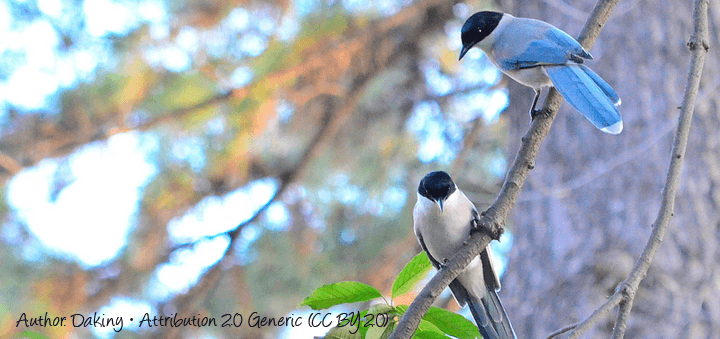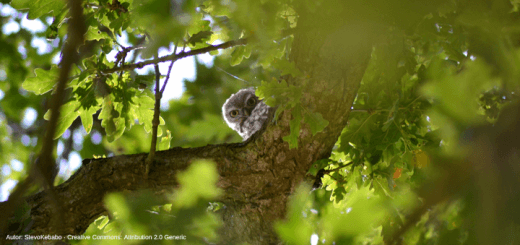Among the horn and the cork oaks appears a blue sparkling shadow. It moves nervously, with rapid movements that are equilibrated by its long tail. After this one, two more specimens appear. The three blue tails stand out on the green colour of spring. Their black masks give them a harmful appearance. But their wing and tail feathers are of an unmistakable blue. They move tirelessly from tree to tree, with short wing beats, and cross the pasture looking for food. This is in fact their environment, to the extent that they are considered a part of it. In case someone got distracted, we are talking about the magpie.
There are two large magpie populations in the world. The eastern colony extends along Siberia, Mongolia, China and Japan. The western colony (subspecies Cyanopica cooki) extends along the Iberian Peninsula, on the other side of the planet. It has always been thought that this species was introduced in the south of Europe by the Spanish sailors who traded with the East. However, the latest investigations have put paid these beliefs. The discovery of a magpie fossil in a cave in Gibraltar has proved its presence in the Iberian Peninsula since ancient times.
Magpies in Spain are mainly located in the southwest quadrant, with a population of approximately 240 000 to 260 000 couples. They mainly inhabit pastures and holm-oak woods, although it is not uncommon seeing them near humans, specially due to their opportunist character, which makes them frequently visit rubbish dumps, picnic areas and pastoral areas, where it is easy to find food. Magpies reach very high numbers in Extremadura and Andalusia. Although they have been suffering regressions for the last years, both in Castile-La Mancha and in Castile and Leon.
Their main threat is the lost and deterioration of their habitat. They have also been subjected to a savage and unfair persecution in rural areas due to the false belief that they ruin fruit orchards and damage game species. They are also affected by the scourge of poison and the abuse in the use of pesticides that are characteristic of the agricultural environment.
With these lines we hope we can make detractors change their mind about this species, so we can see those blue sparkles in the pastures of south Europe for a long time. A thousand years ago, even before the first human beings arrived, magpies crossed Eurasia and reached the Iberian Peninsula. It would be a pity if they disappeared.












